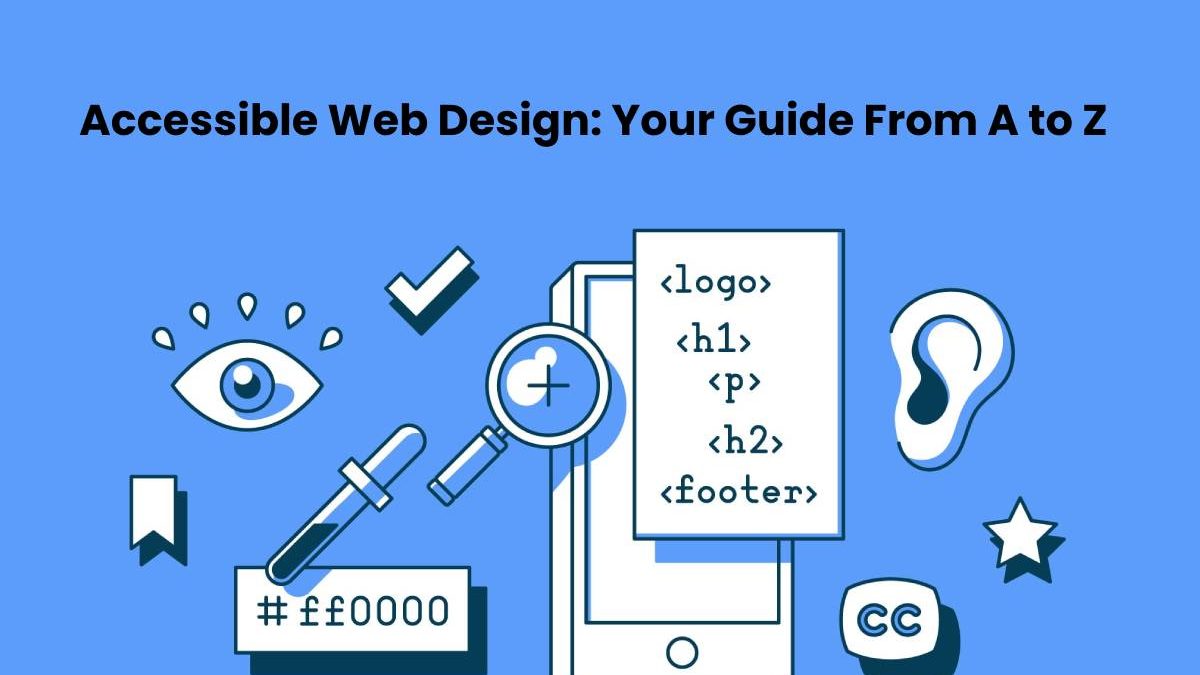Without a doubt, the web is quite possibly the main development in our cutting-edge time. As of now, there are around 5 billion web users, which is comparable to a portion of the worldwide population.
Web innovation has genuinely had an impact on the manner in which we get things done. From accessing news and data to acquiring training, arranging our profession, looking for occupations, interacting with governments, purchasing things, and so on. Envisioning existence without it is hard.
With its developing significance, it is inescapable to make the web accessible to everybody. In addition to a necessity under the Americans with Disabilities Act of 1990, web accessibility is a social obligation of the people who plan and foster web destinations, devices, and applications.
Table of Contents
What is Web Accessibility?
Accessibility in web design is ensuring that the web can be accessed by everybody. Furthermore, by ‘everybody’ we mean all people, including the individuals with disabilities.
Yet, not simply they ought to be offered the chance to access the web easily. Each person who experiences any issue, infection, or handicap ought to likewise be thought about while planning websites. Notwithstanding actual inabilities, web accessibility likewise covers individuals who have situational handicaps and financial limitations (for example those with lower transfer speed ought to in any case have the option to access the data they need on the web).
Accessibility is Important for Everyone
Seeing the significance of web accessibility to individuals isn’t hard. Consider a first-time mother who needs to figure out how to do everything with a child in her arms or an individual who has quite recently experienced a significant medical procedure. Another model is a retired person who is still figuring out how to explore the web from their telephone. Making the web accessible to people no matter their status, age, condition, or circumstance is essential to make their web experience a positive and significant one.
In any case, what about organizations? Doesn’t planning an inclusive website mean additional work and venture? Are there any genuine advantages of web accessibility to organizations?
Indeed, the response is YES.
As a matter of some importance, it interfaces you to a bigger pool of possible clients. An easy-to-understand website can draw in more audience. In the interim, adding subtitles/captions, or sound records to your website can assist you with contacting individuals with tactile issues who comprise a big part of the world’s population.
With its gigantic advantages to people and organizations, web accessibility, in this manner, assumes a basic part in the public eye. An accessible website empowers individuals with disabilities to participate in public affairs more effectively.
The ADA Web Accessibility
Published in 1990, the ADA compliance checklist for websites is a social equality regulation that gives security against segregation in every aspect of public life. This implies that like every other person, individuals with disabilities can enter all open and confidential spots with simplicity and accommodation.
In 2008, alterations were made to the ADA to incorporate web accessibility. Under the law, online spaces ought to be made accessible to a more extensive scope of individuals with disabilities.
WCAG 2.1
The Web Content Accessibility Guidelines 2.1 blueprints the suggestions and approaches concerning web accessibility.
As per this rule, web content ought to be discernible, operable, reasonable, powerful, and adjusting. It covers everything, from picking a text option in contrast to making the console accessible, the substance readable and language reasonable, and the website or apparatus viable with changing gadgets.
Elements of Accessible Websites
- Perceivable. The WCAG 2.1 clarifies that the data and UI parts of a website ought to be introduced to clients in a manner they can see.
- Operable. All the usefulness of the website ought to be worked through a console interface without requiring clients for explicit timings for individual keystrokes.
- Understandable. How the data is introduced, as well as the design of the substance, ought to be straightforward.
- Robust. This proposes that the substance ought to be sufficiently robust so it very well may be deciphered by an extensive variety of client specialists or instruments, like assistive innovations.
- Conformance. This includes testing the web interface for accessibility.
In Final Words
Web accessibility is crucial for online presence, but also for overall business success. As there are many businesses that are either struggling or clueless when it comes to designing an inclusive website, they often decide to reach out to companies that provide UI UX consulting to do the work for them. This way, business owners can dedicate their time to other, more relevant projects, while allowing professionals to implement all elements of web accessibility.

